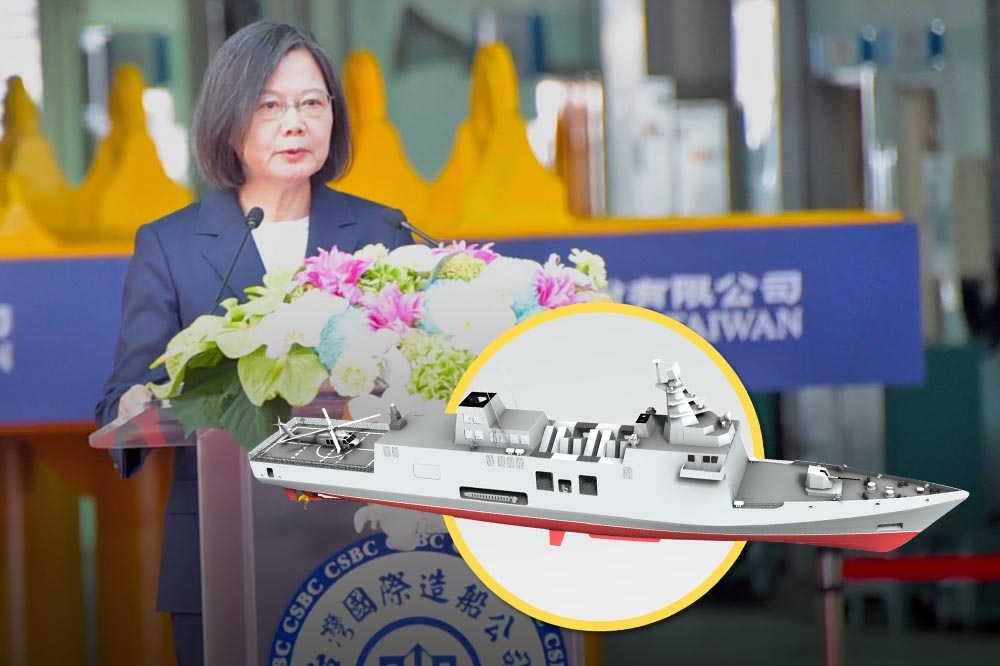First photos of the Taiwanese Light Frigate coming out, 2 ships expected in 2026.
from the website upmedia.mg, translated…
Link
日前美國軍工集團Leidos的全資子公司Gibbs&Cox,在參加2023印太海事展時,公開澳洲皇家海軍推銷的輕型......

www-upmedia-mg.translate.goog
‘A few days ago, Gibbs & Cox, a wholly-owned subsidiary of the US military-industrial group Leidos, disclosed the light frigate configuration AUSLF promoted by the Royal Australian Navy when participating in the 2023 Indo-Pacific Maritime Exhibition, and revealed that "this design is based on the reference to another one expected to be launched next week." "The design of an allied navy that will cut steel plates and deliver two ships in 2026." It was pointed out that the Navy was very annoyed because the information about the start of steel plate cutting of the Navy's light frigate (air defense type) was revealed in advance, because the Ministry of National Defense has planned On the morning of the 17th, President Tsai Ing-wen went south to Kaohsiung CITIC Shipbuilding to preside over the steel plate cutting and groundbreaking ceremony for the Navy's light frigate (air defense type). She also displayed the overall design of the light frigate (air defense type), which also represented the official start of construction of the navy's light frigate. .
However, what is also causing headaches for the Navy is that 48 hours after the foreign reports, a "Navy Light Corvette" hull design appeared on the Internet. The drawing also marked "The Navy Light Corvette has a length of 115 meters and a width of 115 meters." 15 meters, with a full load of 3,000 tons", and the design clearly states all weapon configurations and future plans. It is pointed out that the dimensions in the design are indeed the ship's specifications, but the hull design is that of the Navy. The initial design draft of the light frigate hull was questioned. The navy had already leaked the design drawings of the navy's light frigate hull.
People familiar with the matter pointed out that the biggest difference between the configuration of the Australian corvette promoted by Gibbs & Cox and the configuration of the navy's corvette is that in addition to the different number of bow vertical launching systems and naval guns, our navy's corvette will be a rotary The 3D phase array radar is integrated with the Taikang antenna on the main mast, while the Australian light frigate uses a fixed 3D phase array radar.
As for the first version of the naval light frigate hull design that appeared on the Internet, it was pointed out that the dimensions and weapon information marked internally were completely finalized projects. "The ship is 115 meters long, 15 meters wide, with a full load of 3,000 tons, and weapons On the project, the Chinese Academy of Sciences Huayang Vertical Launch System (VLS) at the bow of the ship contains 32 Haijian-2 anti-aircraft missiles; the future planned air defense type will include 24 Haijian-2 anti-aircraft missiles plus 10 Haigong-3 anti-aircraft missiles, and The 32 anti-submarine Haijian-II anti-aircraft missiles plus 8 anti-submarine rockets; the total of 16 Yuu-er and Yu-san anti-ship missiles are all clearly explained.
It was pointed out that the navy's light frigate finalized the design for the first time. After internal discussions, it was believed that the Taikang antenna located in the middle of the hull and the 3D phase array radar should be integrated on the main mast. After further discussions with Gibbs & Cox, The final decision was made on the design drawing of the naval light frigate (air defense type) released on the 17th. Above the main mast of the bow is a rotating 3D phase array radar, and a Taikang antenna is installed behind the radar.
It is understood that the navy's light frigate is completing the contract design and immediately carries out and completes all ship model testing projects according to the design drawings. It has now entered the detailed design stage, and the construction drawing work has also begun. If everything goes well, it can be completed in accordance with the contract. Two naval light frigates will be delivered in 2026; however, due to the naval light frigate towed sonar procurement project sponsored by the Chinese Academy of Sciences, a total of three foreign manufacturers have passed the qualifications to enter the selection. The Guanghua Planning Office of the Chinese Academy of Sciences will work with various professional fields to make the selection. In the near future Only then will there be results. Therefore, Gibbs & Cox has not yet finalized the anti-submarine design. It remains to be seen whether there will be any changes.’



